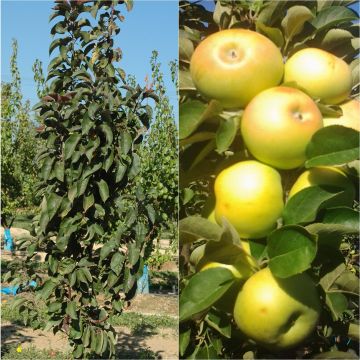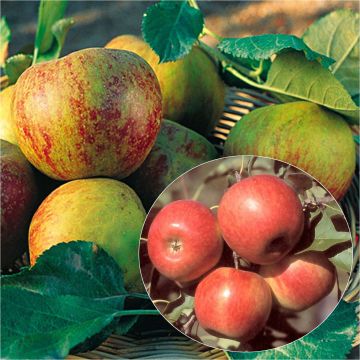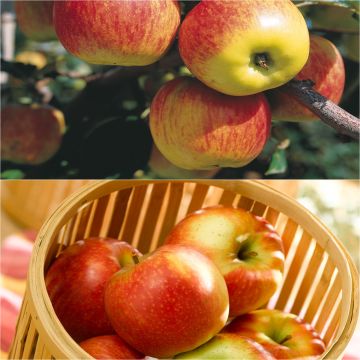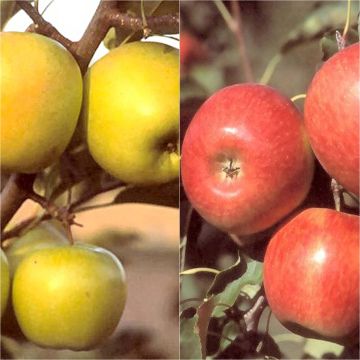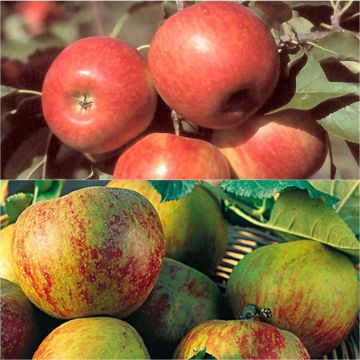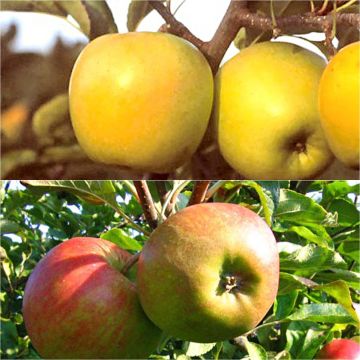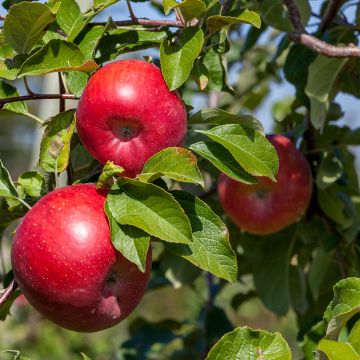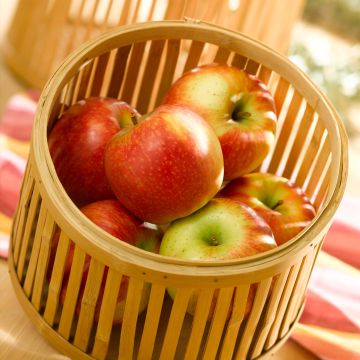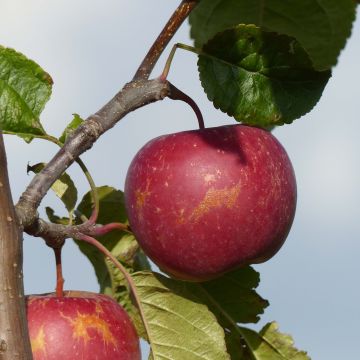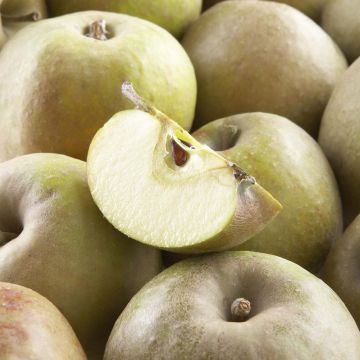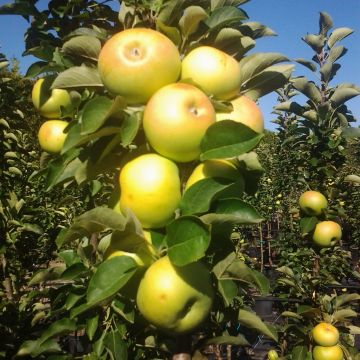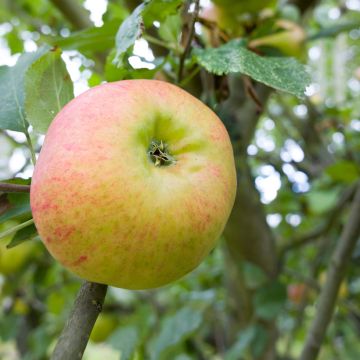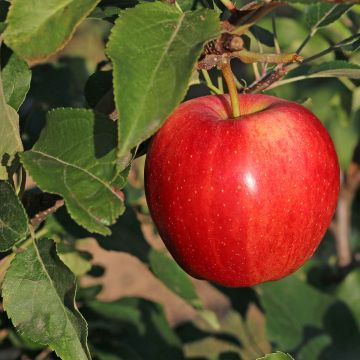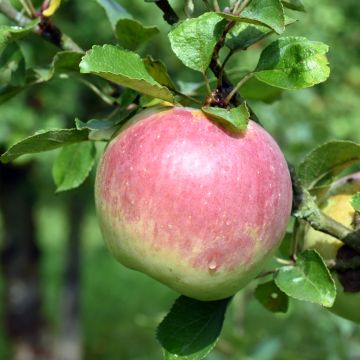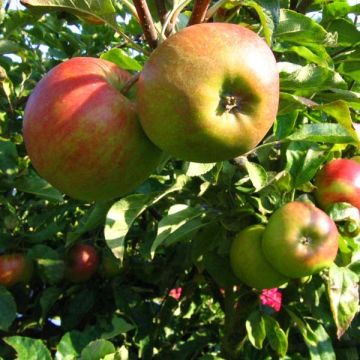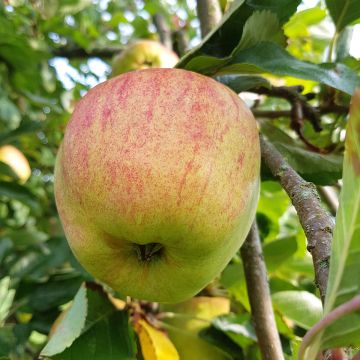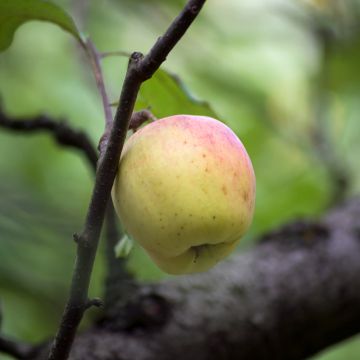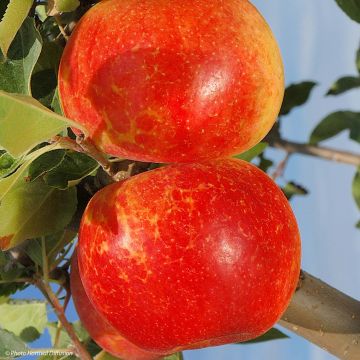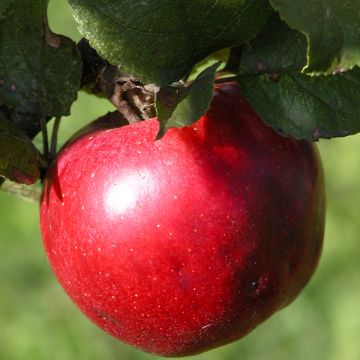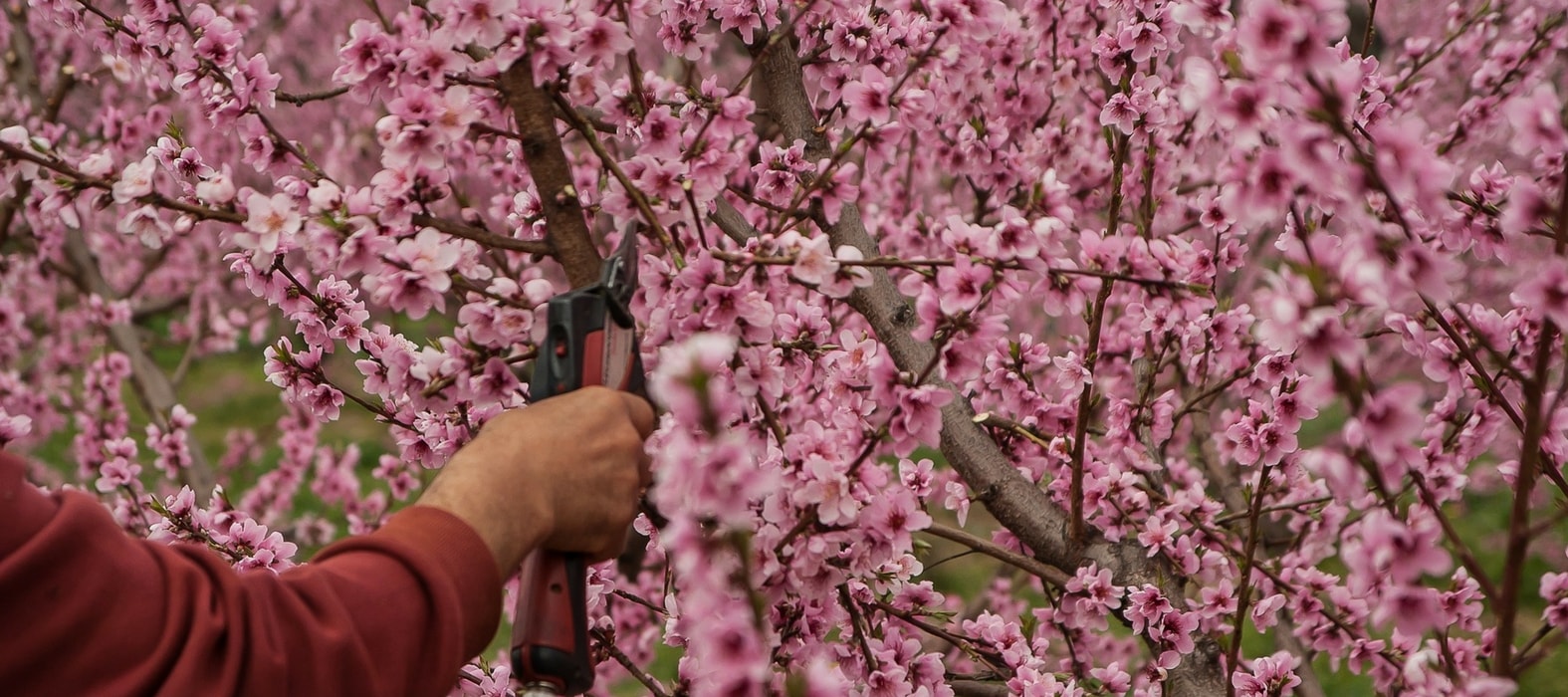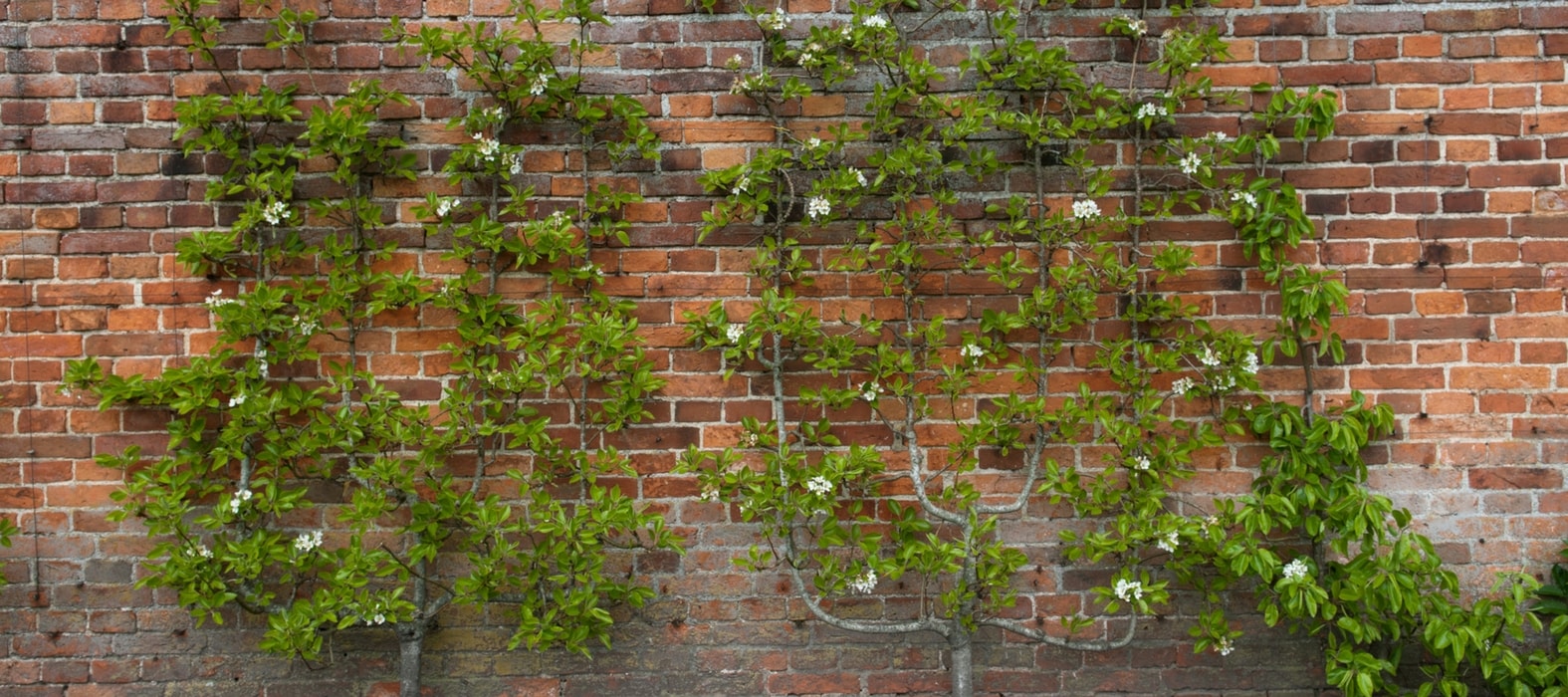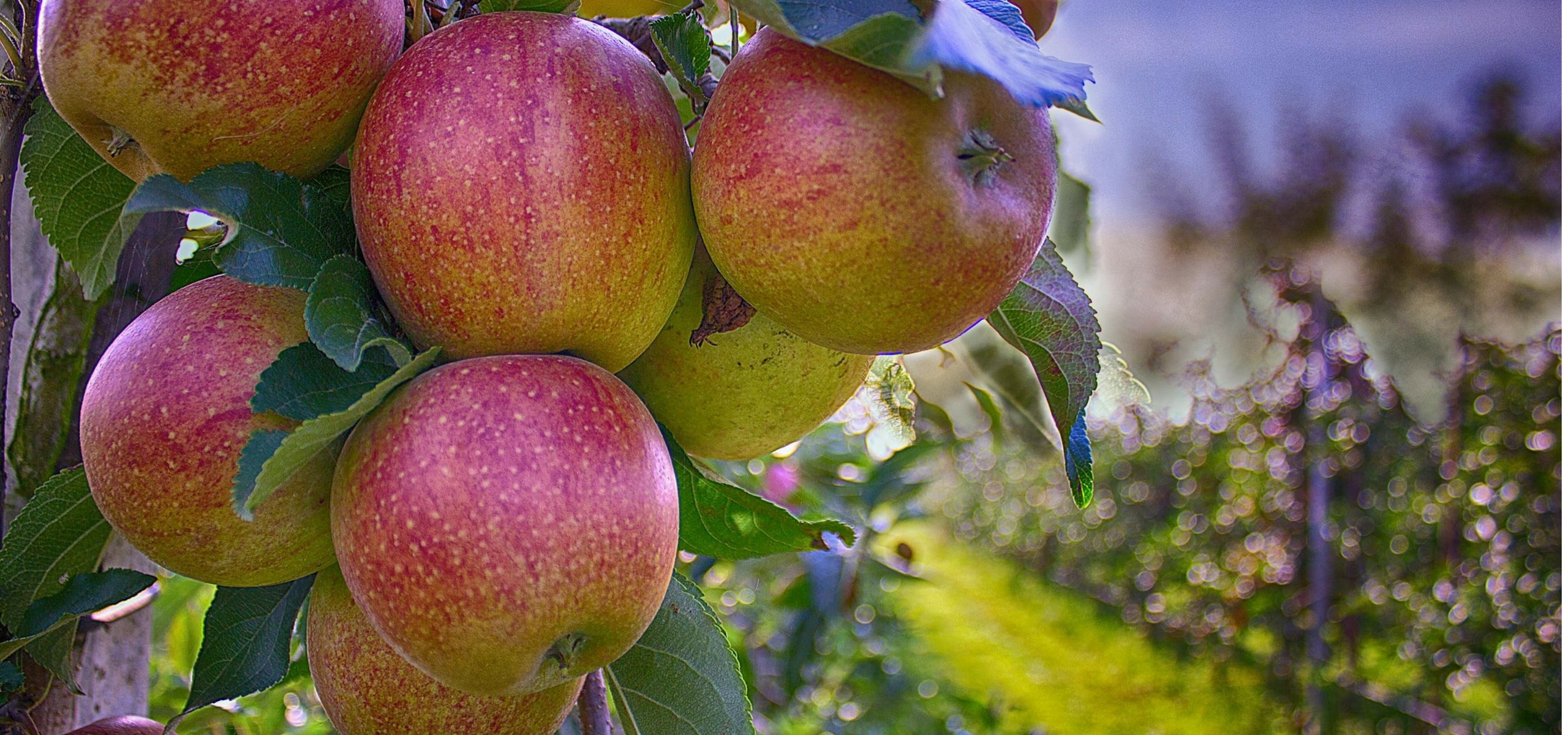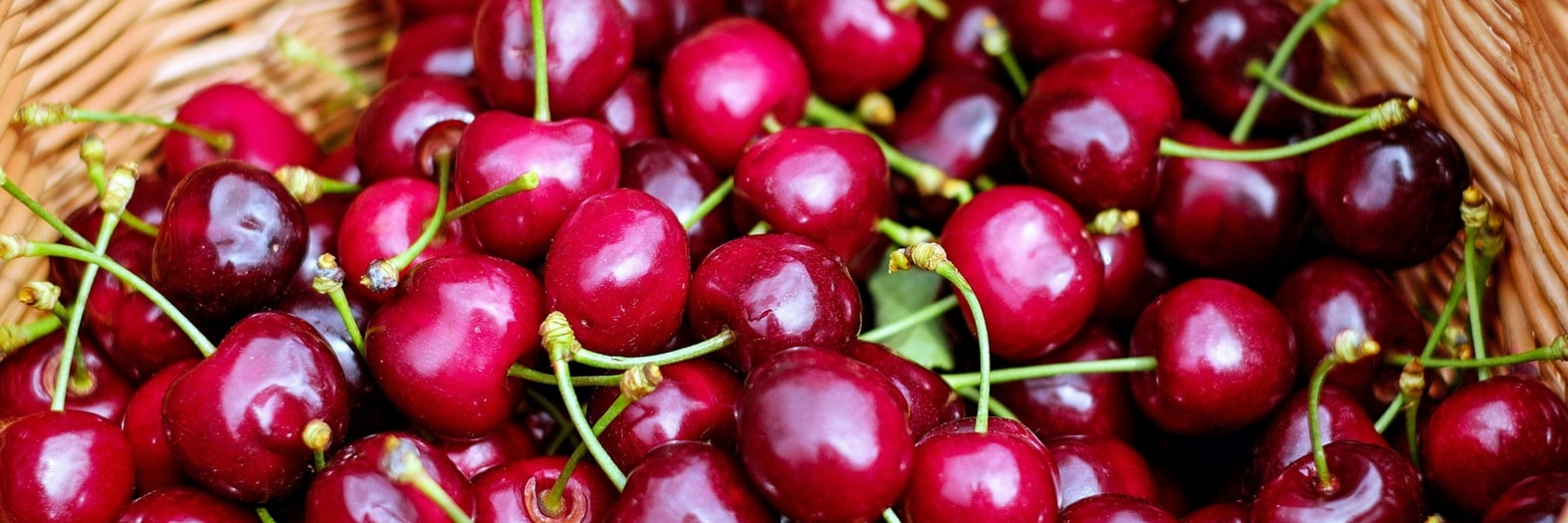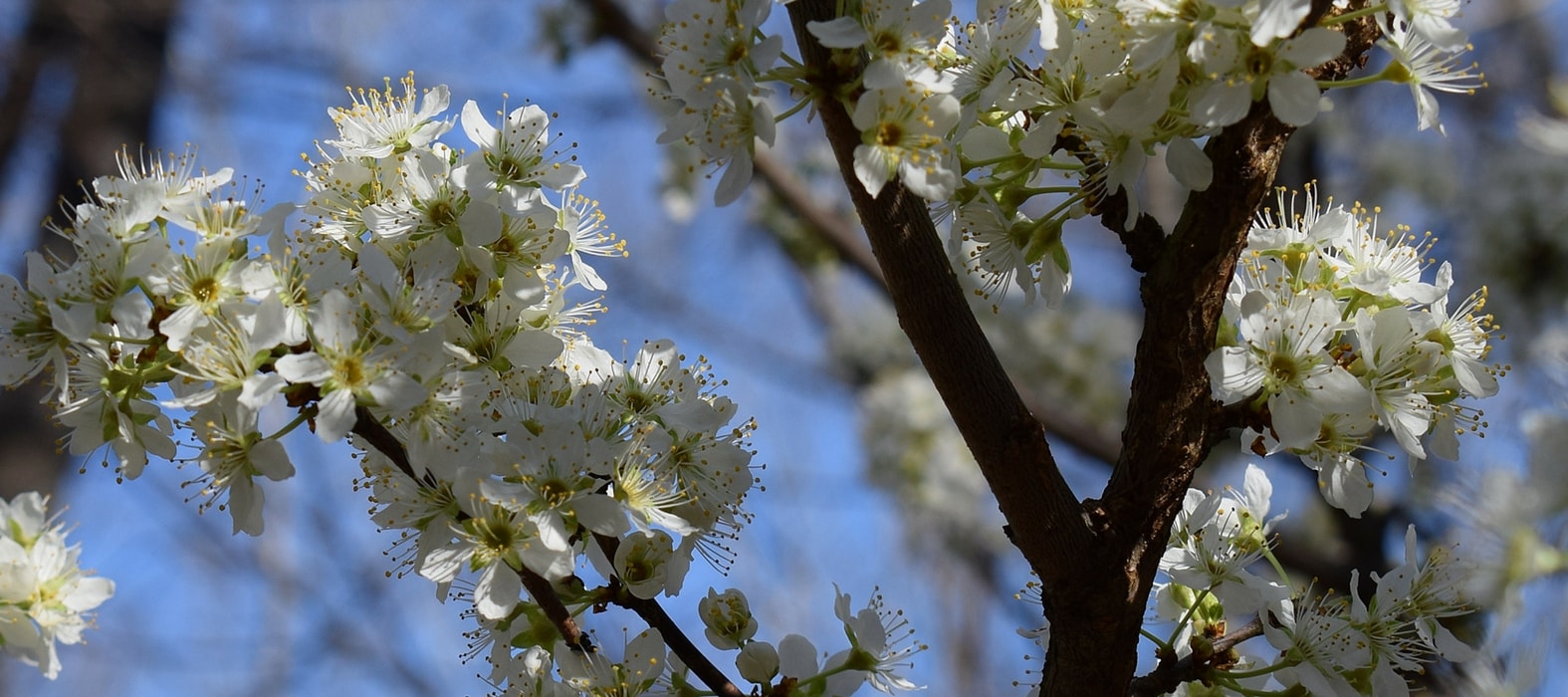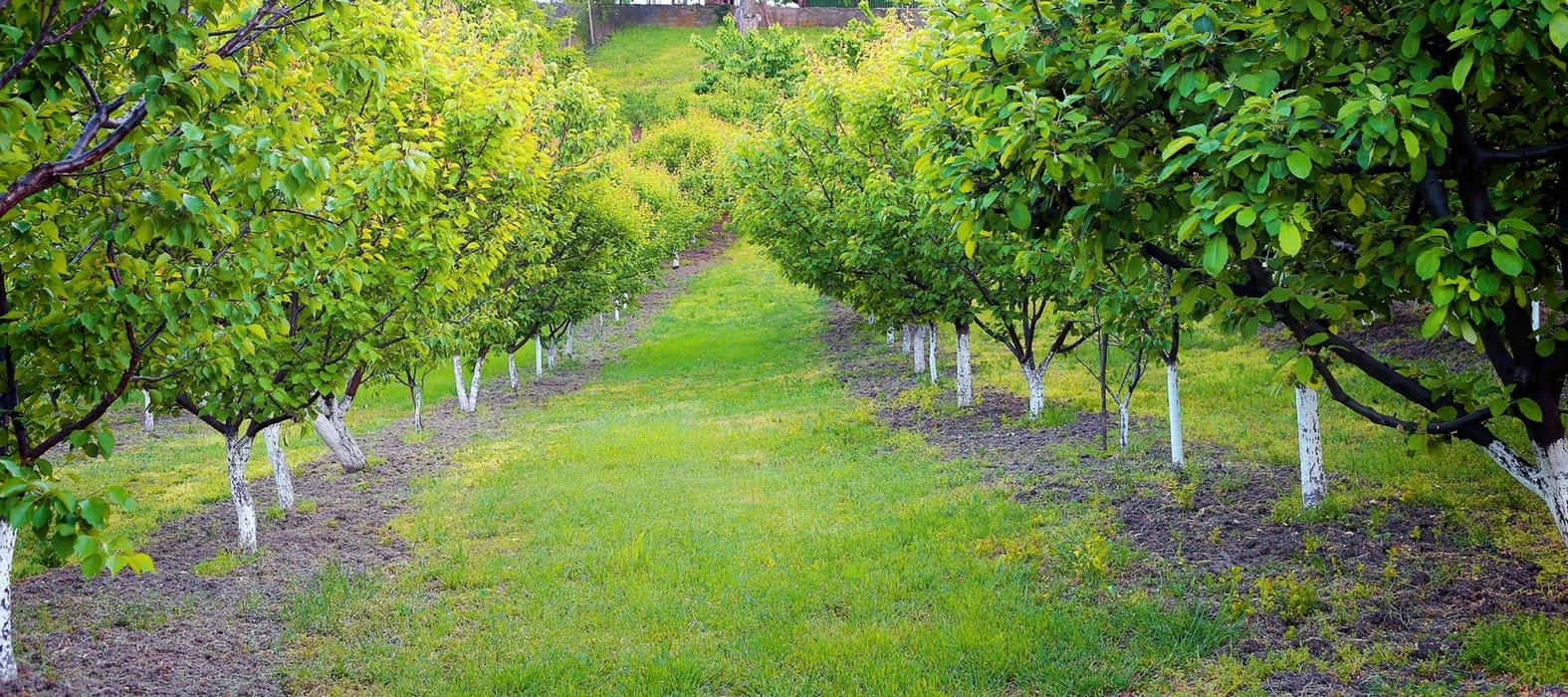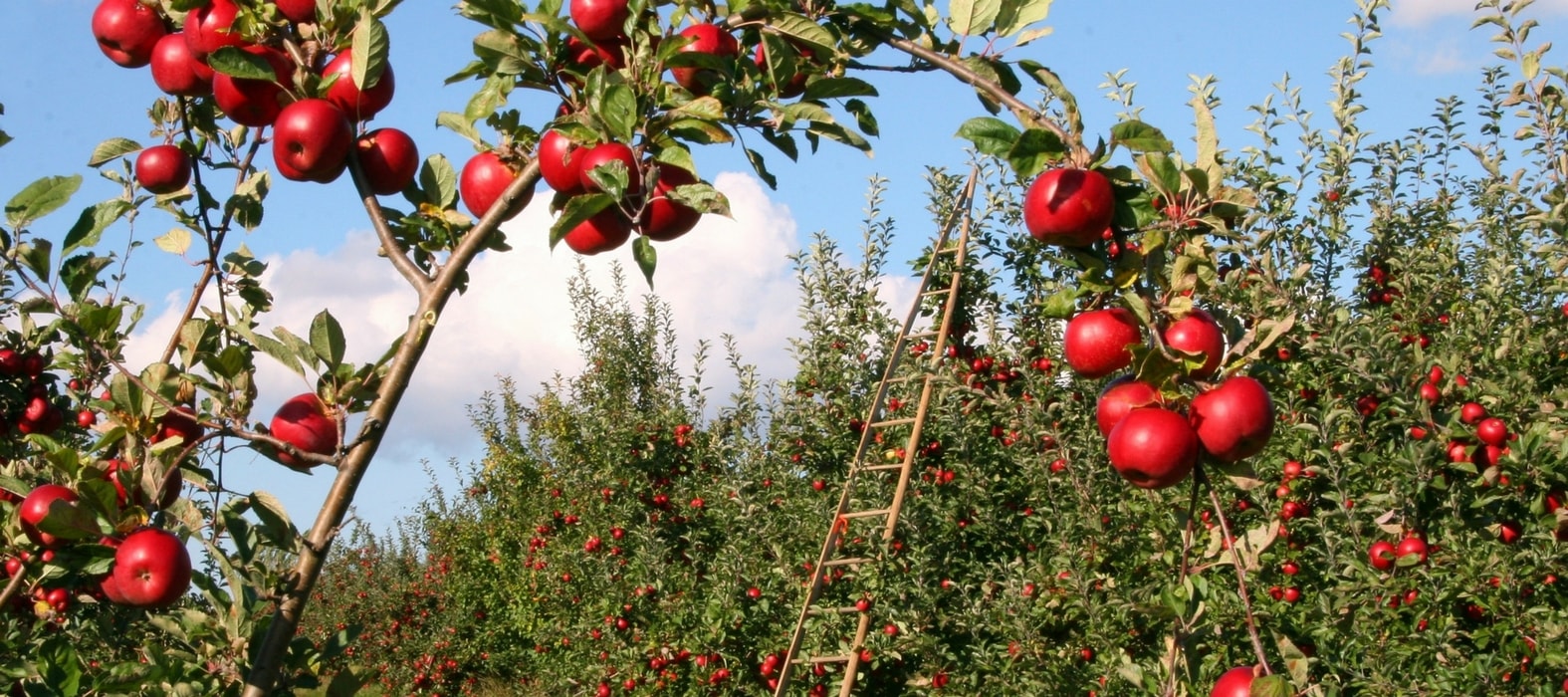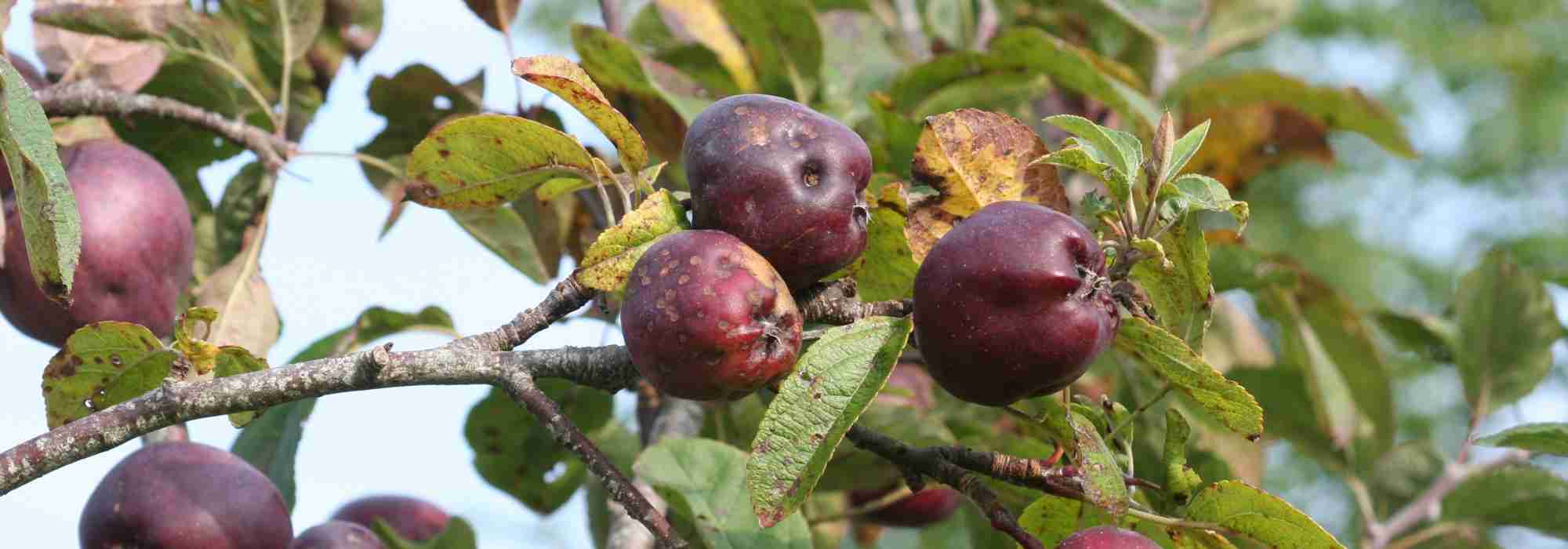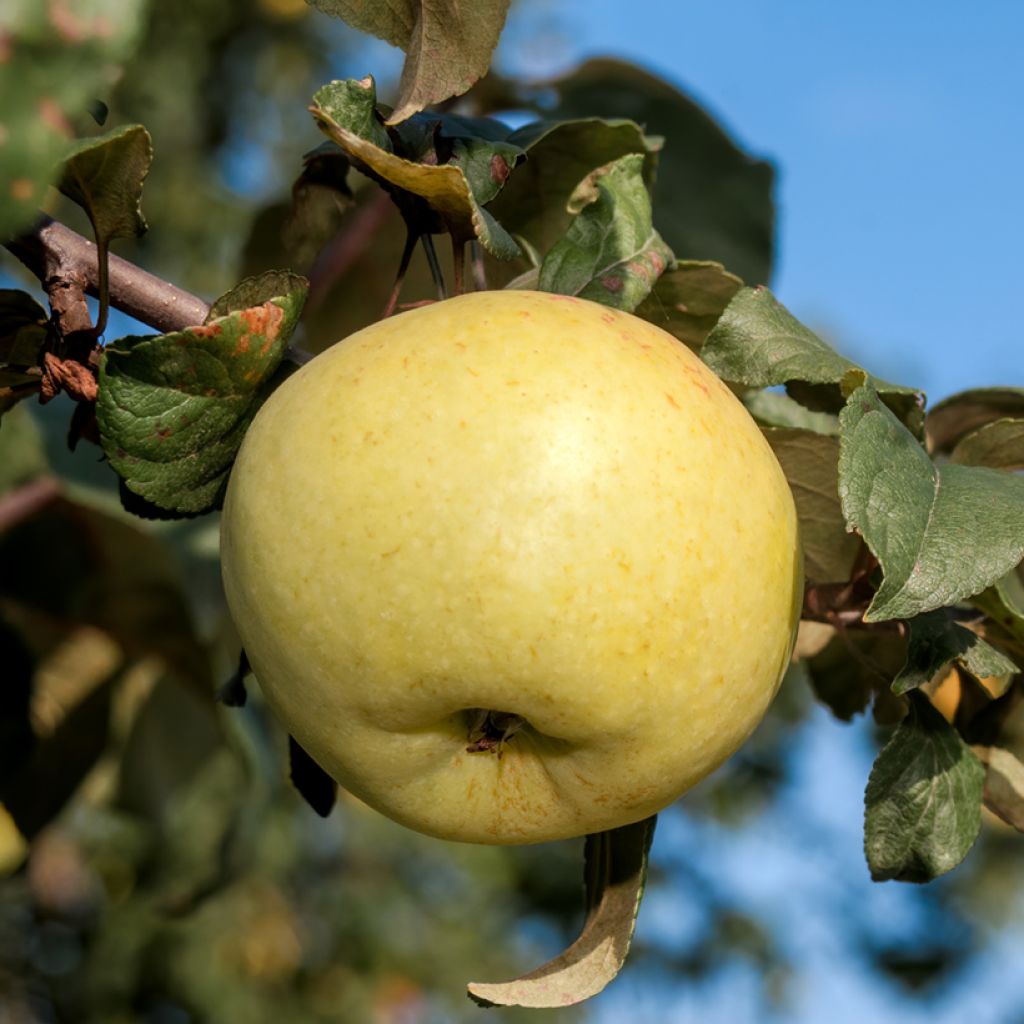

Apple Tree Cukrówka Litewska - Malus domestica
Apple Tree Cukrówka Litewska - Malus domestica
Malus domestica Cukrówka Litewska
Apple
Special offer!
Receive a €20 voucher for any order over €90 (excluding delivery costs, credit notes, and plastic-free options)!
1- Add your favorite plants to your cart.
2- Once you have reached €90, confirm your order (you can even choose the delivery date!).
3- As soon as your order is shipped, you will receive an email containing your voucher code, valid for 3 months (90 days).
Your voucher is unique and can only be used once, for any order with a minimum value of €20, excluding delivery costs.
Can be combined with other current offers, non-divisible and non-refundable.
Why not try an alternative variety in stock?
View all →This plant carries a 6 months recovery warranty
More information
We guarantee the quality of our plants for a full growing cycle, and will replace at our expense any plant that fails to recover under normal climatic and planting conditions.
Description
The 'Cukrówka Litewska' Apple Tree is a very hardy, old variety from the Baltic countries, with fruit appearing early in the season. This summer apple tree produces a beautiful spring blossom, brightening the garden and highlighting the tree. The fruit can sometimes be picked as early as August, or in September. The apples have a lovely pale yellow colour, turning red on the sun-exposed side. They should be eaten quickly as they do not store very well. The tree is vigorous but requires the presence of another apple variety to act as a pollinator.
Apple Trees are members of the large Rosaceae family. There are around 40 species within the Malus genus, including both fruit-bearing varieties like the common Apple Tree or Malus domestica (synonyms, Malus communis or Malus pumila), and ornamental ones (such as the stunning flowering Crab Apples). While the Romans knew of 29 varieties, today their number is estimated at around 20,000 worldwide.
The Malus 'Cukrówka Litewska' originates from Lithuania and its discovery or cultivation (a small mystery surrounds its origin) dates back to the 19th century. This variety is particularly hardy. The tree is quite vigorous, typically reaching a height of 4.50 m with a spread of 3.50 m, though it can grow up to 6 m with age. In spring, it blooms abundantly with small, single, mainly white flowers with a slight pink tint, featuring a decorative golden centre. Though not fragrant, they are ornamental and attract pollinating insects. The tree is self-sterile and therefore requires a nearby pollinator. The famous 'Reine des Reinettes' Apple Tree can fulfil this role, ensuring a good harvest. The fruit is variable in shape, though mostly spherical and slightly flattened. The epidermis has a beautiful yellow colour which gradually becomes marbled with red on the sun-exposed side as the fruit ripens. The thin skin protects a white, very sweet and notably non-sour-tasting flesh, making it ideal for those sensitive to acidity. This is a dessert apple, best eaten straight after picking in September (or August depending on the year and region), and it does not store well.
The 'Cukrówka Litewska' is prized in Eastern Europe for its hardiness and abundant yield, athough it is subject to biennial bearing. A high-yield year will thus be followed by a low-production year as the plant essentially rests after the effort of the previous year. Plant it alongside later varieties such as the 'Api étoilé' Apple Tree , whose curiously ribbed fruit is harvested in November-December and stores until May the following year. You can also plant other species nearby, such as Pear Trees or a Mirabelle Plum Tree, with its uniquely delicious yellow fruit. Also consider small fruit-yielding bushes like a Blackcurrant Bush or a Perpetual Raspberry 'September' bush, which produces fruit from July to October.
Plant habit
Fruit
Flowering
Foliage
Botanical data
Malus
domestica
Cukrówka Litewska
Rosaceae
Apple
Cultivar or hybrid
Other Apple trees
View all →Planting and care
Choose a sunny spot for your Pommier Cukrówka Litewska; the soil can be slightly chalky or acidic, but not excessively so. Dig a wide planting hole at least three times the size of the root ball. Add organic matter (compost, potting soil...) and a base fertiliser such as ground horn at the same time. Do not bury the graft junction. Stake if necessary. For apple trees planted in isolation and exposed to wind, it may be useful to stake them by setting up a guy-wire system: plant 3 stakes in a triangle 50 cm around the trunk, join them together with pieces of wood. Protect the bark with a piece of rubber for example and attach the stakes to the trunk with metal wires. Water generously, even in winter, even if it rains. Fruit trees are ideally planted between October and March, outside of frost periods. Container-grown plants can be planted all year round except during periods of extreme heat or frost.
In winter, you can add a small shovel of wood ash rich in potash, to improve fruiting. The apple tree can be susceptible to various diseases and pests. To limit risks, space trees sufficiently, plant mixed-species hedges, set uo nesting boxes or insect shelters to attract beneficial insects. In short: prioritise diversity. The main diseases affecting apple trees are scab (brown spots on the leaves), brown rot (withering of flowers and fruit rot on the tree) and powdery mildew (white felting on the leaves). For these three cases, preventive action is preferable by spraying a horsetail decoction; as a last resort and in case of severe attacks, a curative treatment with a Bordeaux mixture can be applied. As for pests, the codling moth (or fruit worm), a small caterpillar from a moth's egg, barrows within the fruit. To remedy this, it is best to act preventively by encouraging the presence of tits and bats by setting up nesting boxes. In case of aphid infestations, spray a solution based on tar soap.
Planting period
Intended location
Care
Planting & care advice
This item has not been reviewed yet - be the first to leave a review about it.
Haven't found what you were looking for?
Hardiness is the lowest winter temperature a plant can endure without suffering serious damage or even dying. However, hardiness is affected by location (a sheltered area, such as a patio), protection (winter cover) and soil type (hardiness is improved by well-drained soil).

Photo Sharing Terms & Conditions
In order to encourage gardeners to interact and share their experiences, Promesse de fleurs offers various media enabling content to be uploaded onto its Site - in particular via the ‘Photo sharing’ module.
The User agrees to refrain from:
- Posting any content that is illegal, prejudicial, insulting, racist, inciteful to hatred, revisionist, contrary to public decency, that infringes on privacy or on the privacy rights of third parties, in particular the publicity rights of persons and goods, intellectual property rights, or the right to privacy.
- Submitting content on behalf of a third party;
- Impersonate the identity of a third party and/or publish any personal information about a third party;
In general, the User undertakes to refrain from any unethical behaviour.
All Content (in particular text, comments, files, images, photos, videos, creative works, etc.), which may be subject to property or intellectual property rights, image or other private rights, shall remain the property of the User, subject to the limited rights granted by the terms of the licence granted by Promesse de fleurs as stated below. Users are at liberty to publish or not to publish such Content on the Site, notably via the ‘Photo Sharing’ facility, and accept that this Content shall be made public and freely accessible, notably on the Internet.
Users further acknowledge, undertake to have ,and guarantee that they hold all necessary rights and permissions to publish such material on the Site, in particular with regard to the legislation in force pertaining to any privacy, property, intellectual property, image, or contractual rights, or rights of any other nature. By publishing such Content on the Site, Users acknowledge accepting full liability as publishers of the Content within the meaning of the law, and grant Promesse de fleurs, free of charge, an inclusive, worldwide licence for the said Content for the entire duration of its publication, including all reproduction, representation, up/downloading, displaying, performing, transmission, and storage rights.
Users also grant permission for their name to be linked to the Content and accept that this link may not always be made available.
By engaging in posting material, Users consent to their Content becoming automatically accessible on the Internet, in particular on other sites and/or blogs and/or web pages of the Promesse de fleurs site, including in particular social pages and the Promesse de fleurs catalogue.
Users may secure the removal of entrusted content free of charge by issuing a simple request via our contact form.
The flowering period indicated on our website applies to countries and regions located in USDA zone 8 (France, the United Kingdom, Ireland, the Netherlands, etc.)
It will vary according to where you live:
- In zones 9 to 10 (Italy, Spain, Greece, etc.), flowering will occur about 2 to 4 weeks earlier.
- In zones 6 to 7 (Germany, Poland, Slovenia, and lower mountainous regions), flowering will be delayed by 2 to 3 weeks.
- In zone 5 (Central Europe, Scandinavia), blooming will be delayed by 3 to 5 weeks.
In temperate climates, pruning of spring-flowering shrubs (forsythia, spireas, etc.) should be done just after flowering.
Pruning of summer-flowering shrubs (Indian Lilac, Perovskia, etc.) can be done in winter or spring.
In cold regions as well as with frost-sensitive plants, avoid pruning too early when severe frosts may still occur.
The planting period indicated on our website applies to countries and regions located in USDA zone 8 (France, United Kingdom, Ireland, Netherlands).
It will vary according to where you live:
- In Mediterranean zones (Marseille, Madrid, Milan, etc.), autumn and winter are the best planting periods.
- In continental zones (Strasbourg, Munich, Vienna, etc.), delay planting by 2 to 3 weeks in spring and bring it forward by 2 to 4 weeks in autumn.
- In mountainous regions (the Alps, Pyrenees, Carpathians, etc.), it is best to plant in late spring (May-June) or late summer (August-September).
The harvesting period indicated on our website applies to countries and regions in USDA zone 8 (France, England, Ireland, the Netherlands).
In colder areas (Scandinavia, Poland, Austria...) fruit and vegetable harvests are likely to be delayed by 3-4 weeks.
In warmer areas (Italy, Spain, Greece, etc.), harvesting will probably take place earlier, depending on weather conditions.
The sowing periods indicated on our website apply to countries and regions within USDA Zone 8 (France, UK, Ireland, Netherlands).
In colder areas (Scandinavia, Poland, Austria...), delay any outdoor sowing by 3-4 weeks, or sow under glass.
In warmer climes (Italy, Spain, Greece, etc.), bring outdoor sowing forward by a few weeks.






























